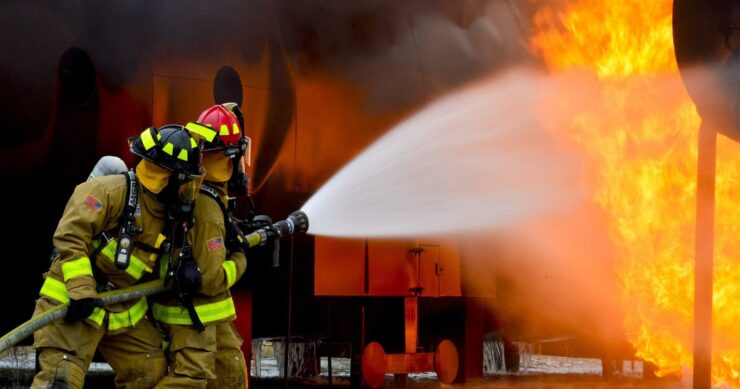Firefighters are specially trained emergency responders whose job is to safeguard people and property. They put out fires and respond to other types of emergencies, such as search and rescue, high-angle rescue, and motor or boat accidents. Additionally, they are trained in first-aid and have a high level of physical fitness, and possess the capacity to remain calm when operating under duress.
Every year an innumerable number of aspirants eagerly await to respond to the fire and rescue recruitment notifications. While there are lucrative perks associated with any government job, the responsibilities that come with it are even more important and need special attention. A day in the life of a firefighter can include attending to fires and other emergencies such as a motor vehicle, industrial, and maritime catastrophes, rescuing and evacuating people from life-threatening situations, extinguishing flames and dispersing or neutralizing toxic substances that require operating pumps, spraying water, foam, and chemicals from hoses, and using portable extinguishers and other appliances. Other tasks include administering first aid, attending and participating in emergency and firefighting training activities such as rescue classes, drills, demonstrations, and courses, participating in high-angle rescue and search-and-rescue missions, emergency, working and assisting other local and national agencies in times of crisis and educating the public on the need of fire safety systems among others.
Although there are no formal educational prerequisites for becoming a fireman, all applicants must pass literacy, numeracy, and mechanical reasoning tests as part of the application process. A high level of fitness is required, as well as a minimum level of physical competence. To begin with, in order to qualify for becoming a firefighter in Australia, one needs to have a valid Australian driver’s license and at least two years of driving experience. If you meet these requirements, you can apply online and complete the required recruitment tests, which includes a personality test, a physical aptitude test, a selection interview, a medical examination, and a shuttle run. To obtain a permanent position, complete the 14-week indoctrination and meet the needed competencies throughout the 6-month probationary term. State and territorial fire departments are the largest employers of firemen. Typically, applications are accepted throughout the year and there is fierce competition for vacant vacancies. Fire prevention officers are employed by the federal and state governments, as well as some large commercial and industrial organizations. In rural areas, local governments hire firefighters to work as bushfire fighters.
So, before responding to your fire and rescue recruitment, you must understand that all of this means that a high level of expertise and experience is required. Fortunately, all Australian firefighting organizations have a time of schooling during which firefighters are thoroughly trained and taught the ropes. But you still need that “extra” something. What’s that extra something we are talking about? Most experienced Australian firefighters would tell you that this can entail a variety of factors, including enjoying being part of a team, having a strong commitment to the conservation of wildlife and natural ecosystems, ability to work autonomously while simultaneously being able to promptly follow commands from a higher authority figure, directly interacting with the public in a variety of ways, including education, training, and preparedness and above all having a problem-solving attitude.




























